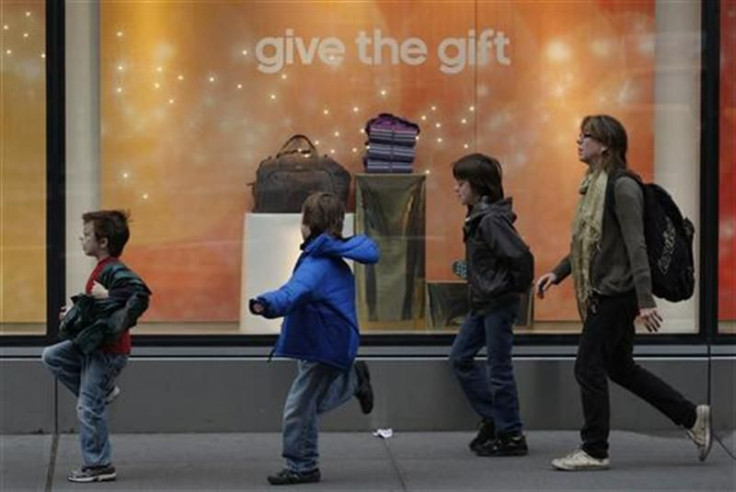Consumer Sentiment up, Trade Gap Narrows

(REUTERS) - An index of consumer sentiment rose to its highest in six months in early December and the trade deficit narrowed in October in the latest signs that the U.S. economy's health is slowly improving.
The Thomson Reuters/University of Michigan preliminary December reading on consumer confidence on Friday climbed for a fourth straight month to 67.7 from 64.1 in November.
U.S. consumers appear to be ending the year in a better mood, said Paul Dales, an economist at Capital Economics in London.
Improved confidence could lead Americans to spend more readily, which would add to the recent momentum gained from strong retail sales and factory output.
Also supporting growth, the narrowing in the trade deficit showed that more goods and services bought by U.S. businesses and consumers were produced within the country.
Employment has also made gains in recent months, although some economists expect the pace of improvement will be too slow for consumers to ramp up spending for long.
Although the recent increase may provide that little bit of support to spending in the malls in the coming weeks, it won't lead to a long and lasting acceleration in consumption growth, said Dales.
U.S. economic growth appears to be accelerating, even as the global economy slows. The euro zone, for example, is widely believed to be slipping into recession as it struggles to contain a sovereign debt crisis.
That crisis, as well as the possibility that the United States will not renew extended unemployment benefits and a payroll tax cut next year, amount to dark clouds looming over the economy.
With signs U.S. growth is quickening coming against big risks to the outlook, the U.S. Federal Reserve is expected to hold monetary policy steady at a meeting on Tuesday.
Despite the improvement, the consumer sentiment gauge remains well below its historical average, underscoring the fragility of U.S. household budgets as many struggle with a weak jobs market.
There's still a long way to go before consumer confidence that would be compatible with strong consumer spending, said Vassili Serebriakov, a currency strategist at Wells Fargo in New York.
Still, measures of consumers' current and future assessment of economic and financial conditions rose to their highest since June.
NARROWING TRADE DEFICIT
U.S. stocks, which rose after EU leaders agreed on measures to partially address the region's debt troubles, held their gains after the data's release, while the dollar weakened.
Any worsening in the euro zone crisis could easily derail the U.S. recovery from the 2007-2009 recession.
Separately, the Commerce Department said the U.S. trade deficit narrowed in October to its lowest in 10 months.
(That) gets the fourth quarter off to a good start in terms of the trade effect on gross domestic product, economists at Wells Fargo said in a note to clients.
The economy expanded at a 2.0 percent annual rate during the third quarter, and JPMorgan said the trade report meant growth during the fourth quarter could exceed its 3.0 percent forecast.
The trade gap totaled $43.5 billion, in line with a consensus estimate from analysts before the report.
While the shrinking trade gap bodes well for fourth-quarter economic output, both exports and imports declined, a sign of some softening in domestic and overseas demand.
(Addtional reporting by Doug Palmer in Washington; Writing by Jason Lange in Washington; Editing by Neil Stempleman and James Dalgleish)
© Copyright Thomson Reuters 2024. All rights reserved.





















